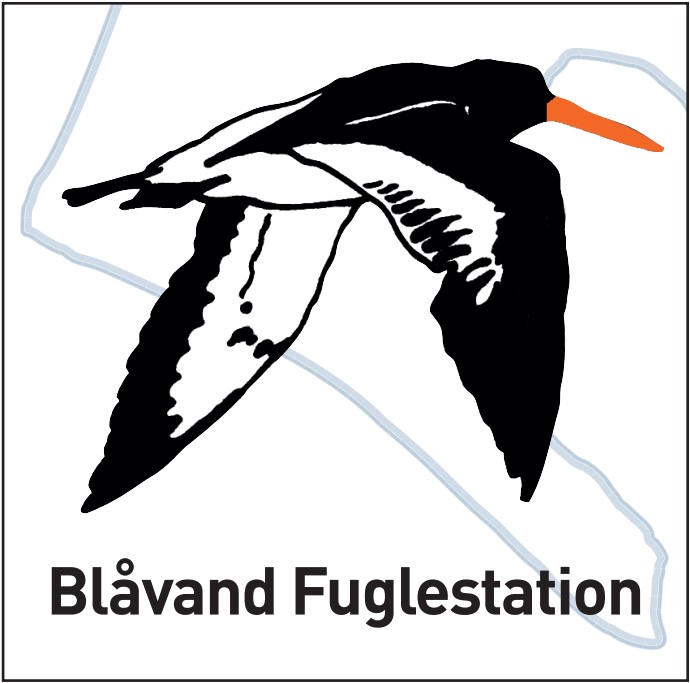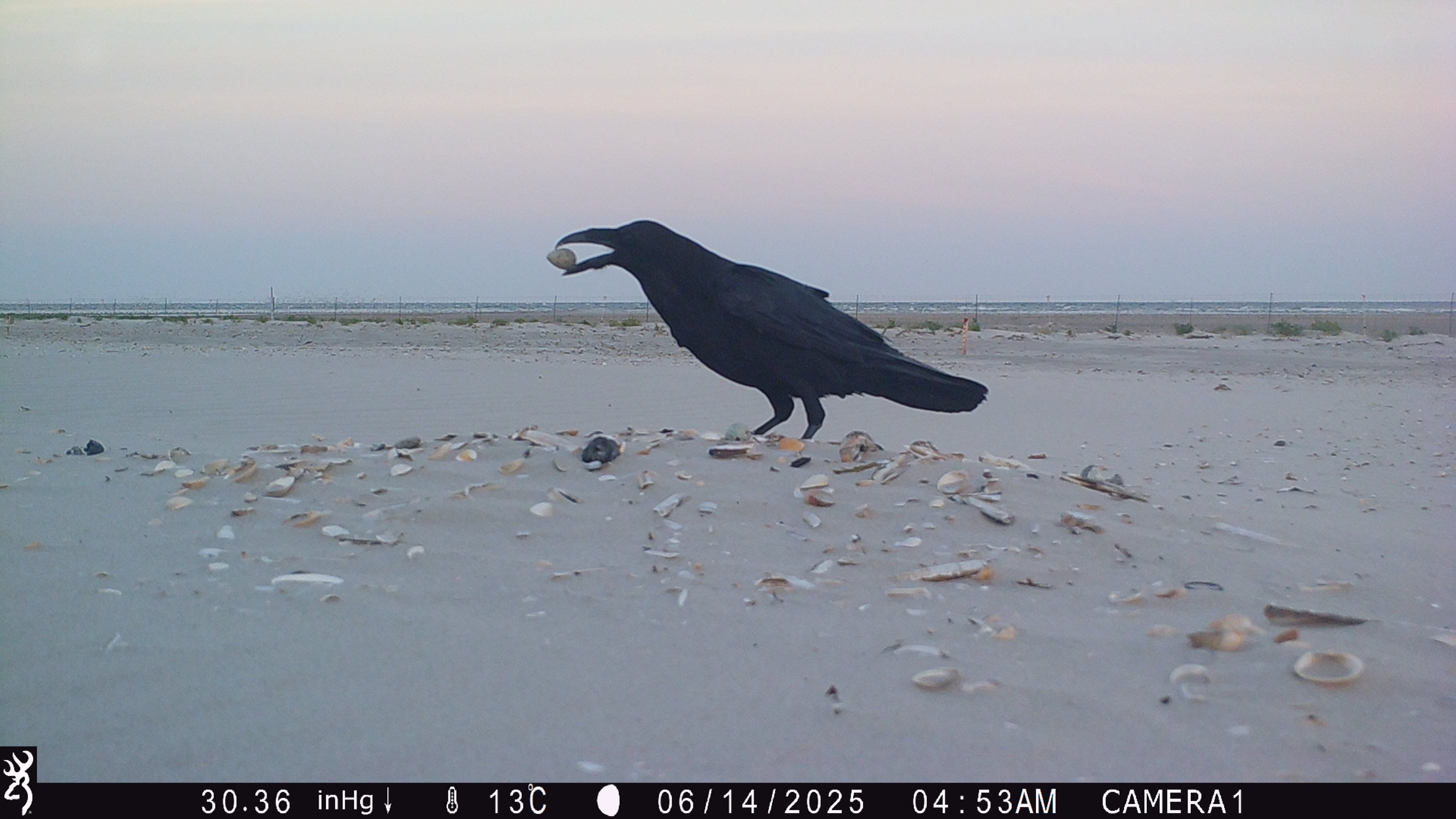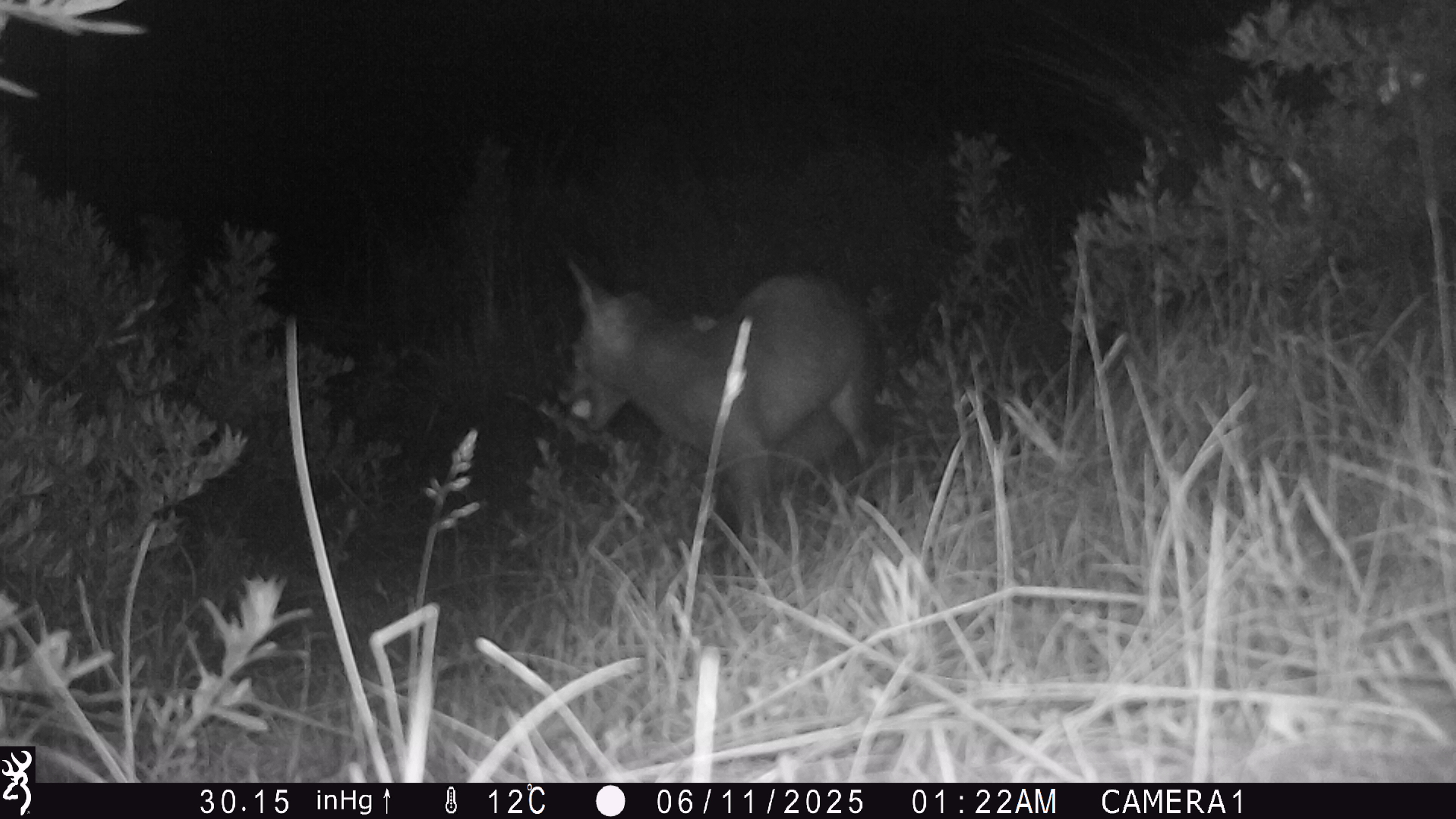Her på Blåvand's blog bringes korte nyheder i dagbogsformat om livet og hændelser på fuglestationen.
Kystfugle Project Update, Kjover & Lille Præstekrave
Morning Observation:
Det var en dejlig varm morgen med kun en smule vind fra nord. Desværre følte vadefuglene ikke for at trække i de forhold, og kun meget få vader viste sig på obsen i dag.
Til gengæld havde vi fire dejlige almindelige kjover – tre meget tæt på, og én trækkende lidt længere ude. Bevægelsen af sortænder havde også taget til i dag, og i løbet af de tre timer kom der en god mængde igennem.
På stranden var der, som det har været længe, en masse rastende sildemåger og fjordterner, men i dag var der også utroligt mange skarver. Når nogle fløj væk, blev de straks erstattet af nye kæmpeflokke, der kom flyvende ud til sandbankerne.
While Thomas and his father were doing the daily morning observation, Louis and I were checking the resting birds on the beach and sandbanks.
It was a typical Saturday morning with absolutely no tourists on the beach, so we had no trouble reading multiple rings of colour-ringed gulls. Our highlight was a juvenile Little Ringed Plover foraging along the shore.
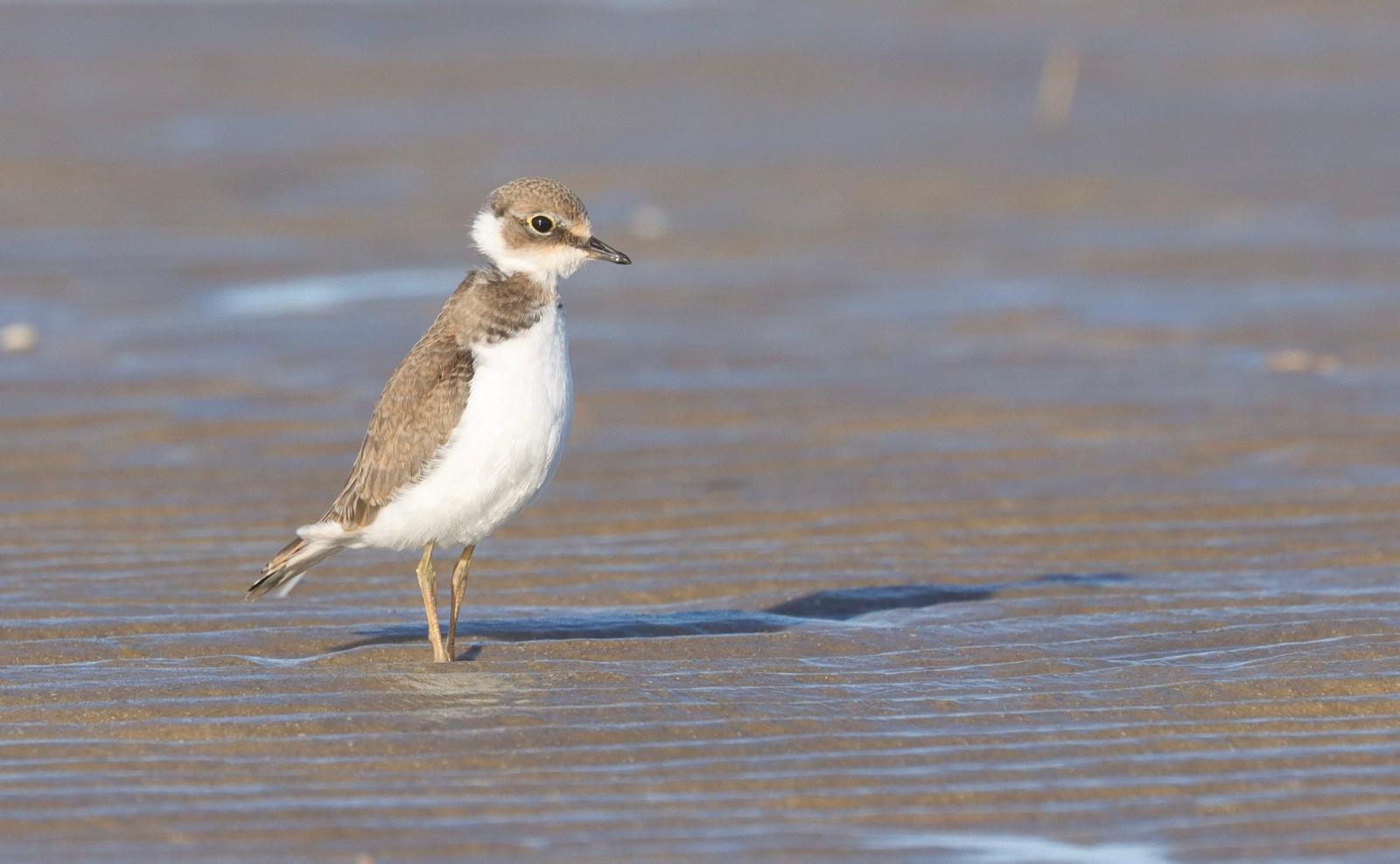
Juvenile Little Ringed Plover; Photo: Louis Poulsen
In the afternoon, Louis and I prepared a pizza dough that we enjoyed for dinner.
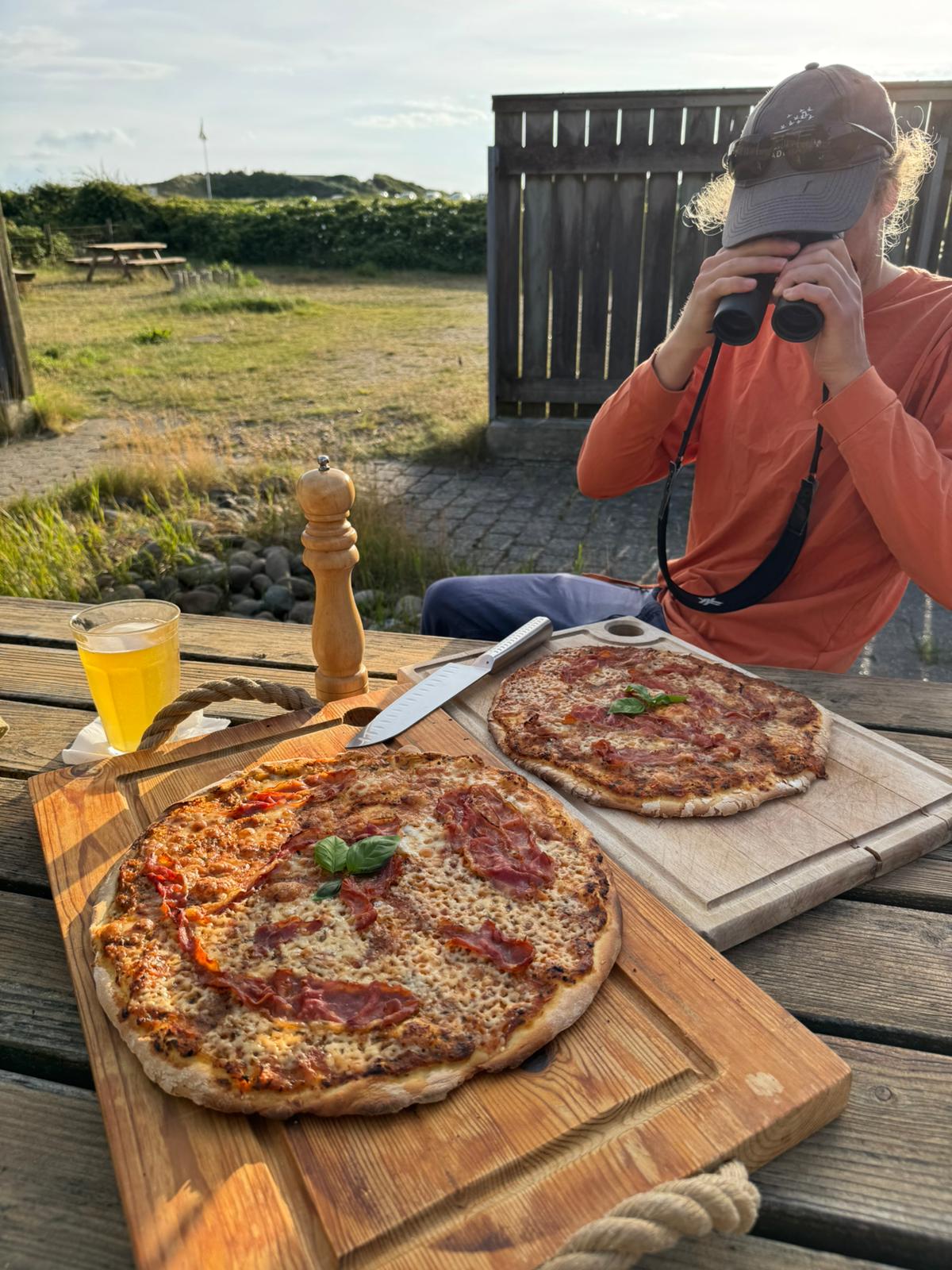
Mangiare deliziose pizze con le birre; Photo: Louis Poulsen
Tomorrow, the weather conditions look promising for wader migration…
Kystfugle Project Update:
The past few months have been a rollercoaster of emotions for me, with more downs than ups, since it has not been going well for the coastal breeding birds inside the fences on the west coast. Even though the breeding season has been catastrophic, our efforts have not been meaningless!
The poor results can be explained by unfavourable weather conditions resulting in sand drift and flooding. Additionally, mammalian and avian predation has been a significant factor, keeping the breeding success of the very few breeding pairs low.
On my last visit to the fence (24.06.25) at Lakolk on Rømø, it was quite windy, with westerly winds up to 10m/s and heavy showers. As a result, the tide came up to the perimeterhegn with a water level of +1.80m. On that day, the fenced-off area provided two pairs of Kentish Plovers and a flock of 15 Little Terns with an area free of disturbance, mammalian predation, and flooding. Even though there were no incubating adults, it was a pleasure to see that they are showing interest in the area.
The fence at Blåvandshuk obviously suffered from the same harsh weather conditions. In comparison to Lakolk, there were two breeding attempts by Little Terns, but unfortunately both were predated, most likely by hooded crows, red foxes, or ravens. Additionally, nine breeding attempts by Common Ringed Plovers were recorded inside (4) and outside (5) the electric fence. Four of the nests outside the fence were predated (again, most likely by foxes and corvids), and one was flooded. Of the nests inside the fence, two were definitely predated by corvids, one by a red fox, and one was abandoned due to sand drift.
Raven predating Ringed Plover nest; Photo: Joseph Stephan.
Red Fox predating an artificial nest; Photo: Joseph Stephan.
I’m still working on the detailed maps and graphs that will show the locations of nesting sites, predation, and sand drift patterns.
Last but not least, my Little Tern highlight from the 30.06.25.
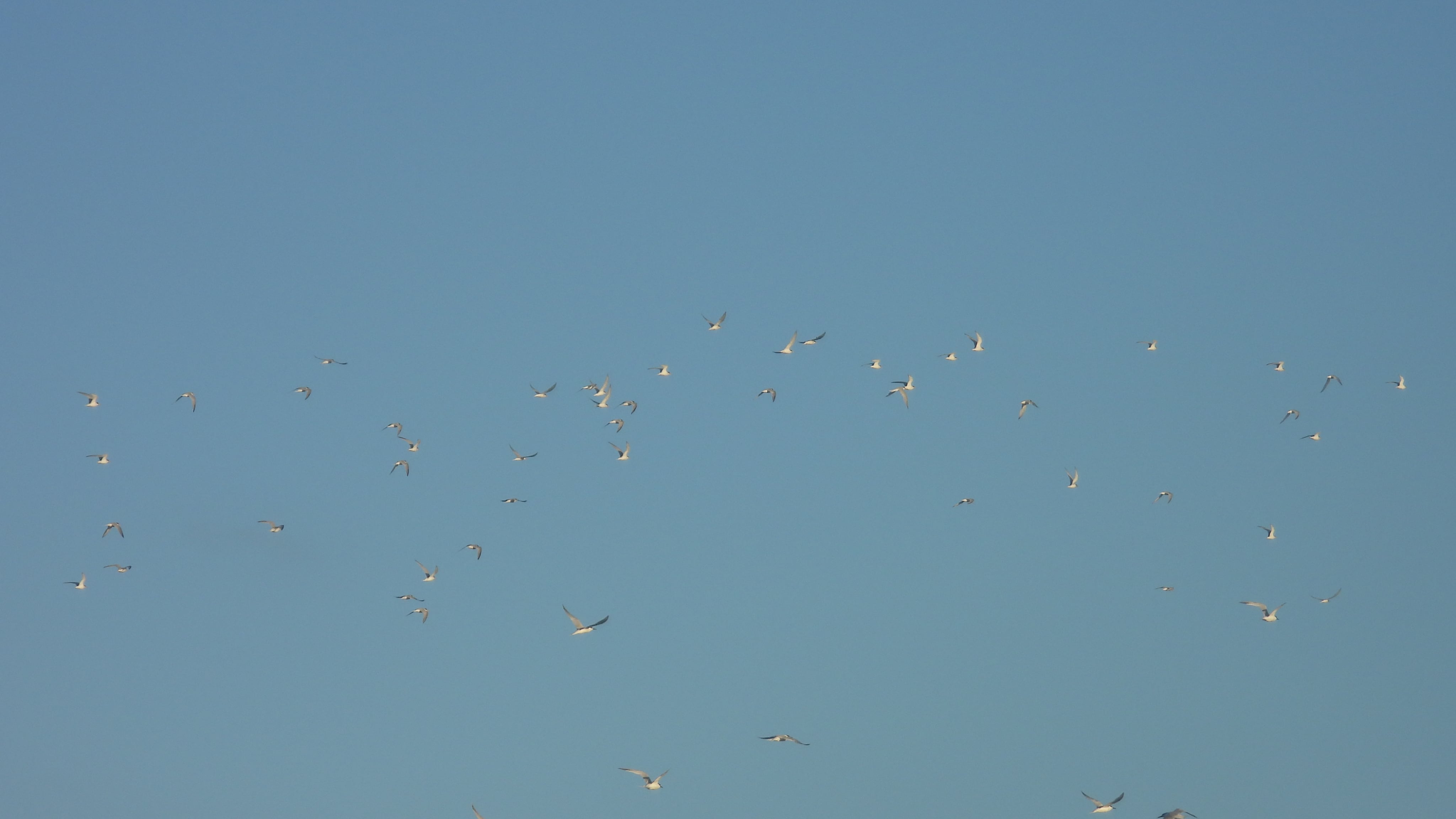
A flock of 48 Little Terns at Blåvandshuk; Photo: Joseph Stephan
Folk på stationen: Thomas Kristensen, Joseph Stephan og Louis Poulsen
